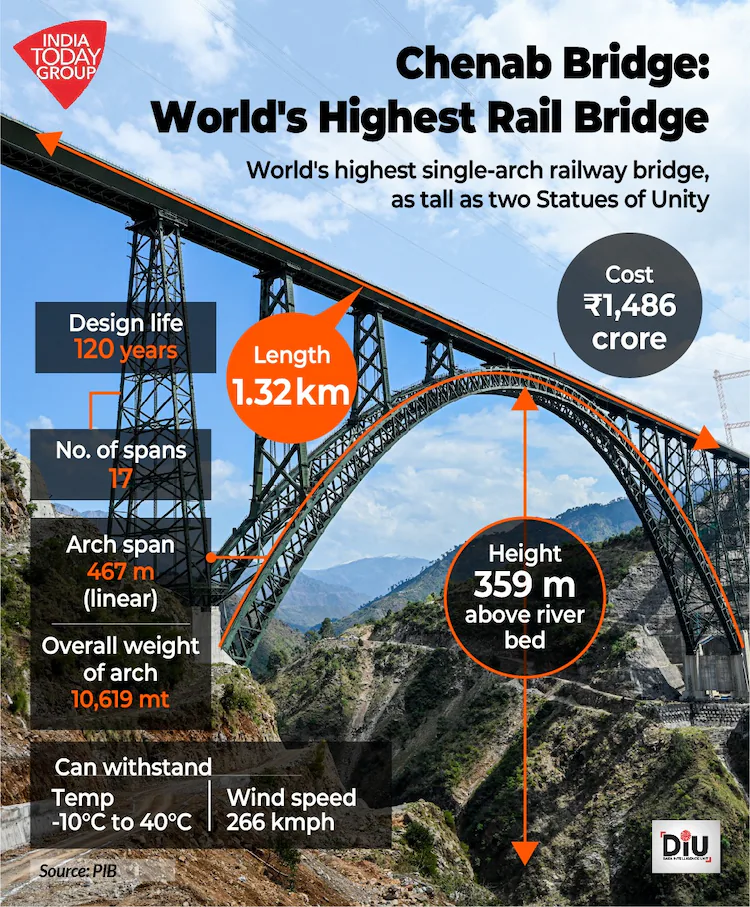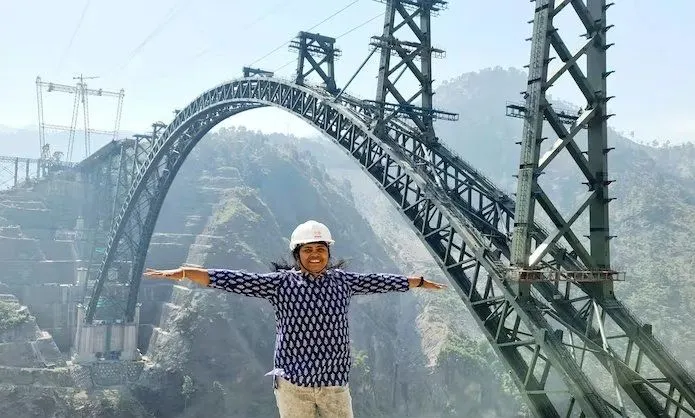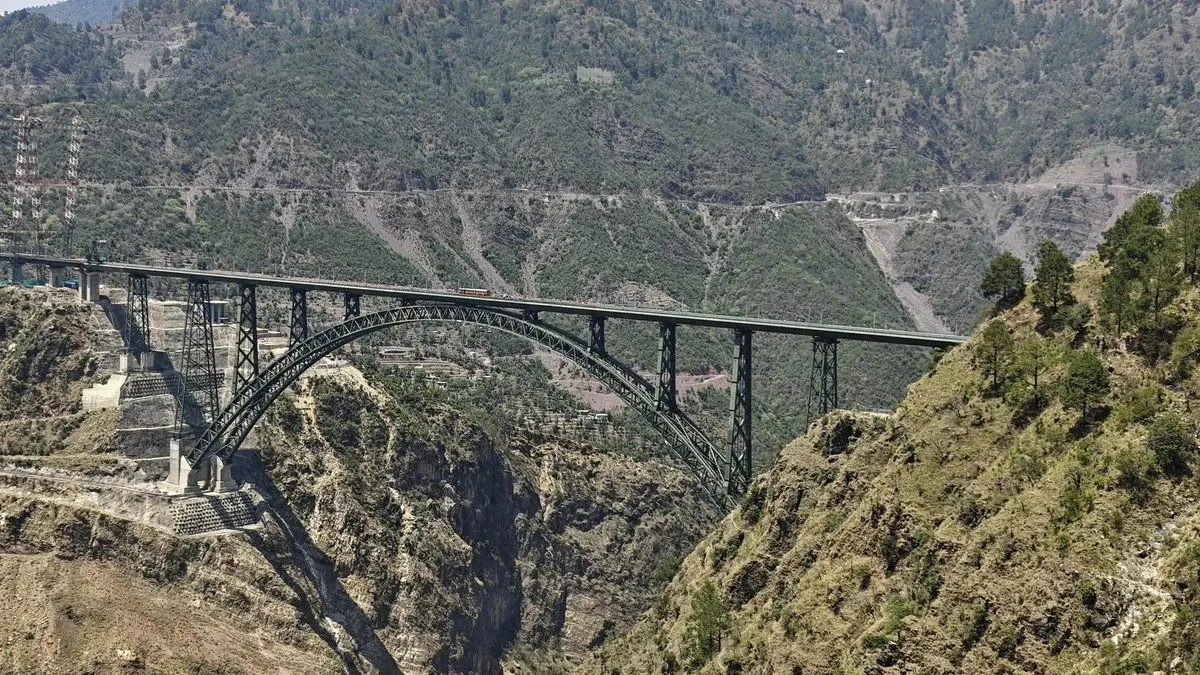Introduction
The Chenab Rail Bridge, recently inaugurated on June 06, 2025, by Prime Minister Shri Narendra Modi, stands as a testament to India’s engineering brilliance. Located in the Reasi district of Jammu & Kashmir, this architectural wonder is now the world’s highest railway bridge, soaring 359 meters (1,178 ft) above the Chenab River—even taller than the Eiffel Tower!
This bridge is a crucial part of the Udhampur-Srinagar-Baramulla Rail Link (USBRL) project, designed to connect the Kashmir Valley with the rest of India. Beyond its structural magnificence, the Chenab Bridge symbolizes resilience, innovation, and national integration.

📌 Key Facts About Chenab Rail Bridge
Location: Reasi district, Jammu & Kashmir, India
✔ River Spanned: Chenab River
✔ Height: 359 m (1,178 ft) — World’s Highest Railway Bridge
✔ Length: 1.315 km
✔ Construction Materials Used:
35,000 metric tonnes of steel
66,000 cubic meters of concrete
46,000 metric tonnes of cement
✔ Purpose: Part of the USBRL project, ensuring seamless rail connectivity to Kashmir.
🕰️ History & Significance
2002: Project sanctioned.
2004: Construction began but faced multiple delays due to technical, security, and geological challenges.
2009: Resumed with enhanced safety measures and advanced engineering techniques.
April 5, 2021: Steel arch closure achieved, marking a major milestone.
June 6, 2025: Inaugurated by PM Narendra Modi, opening a new era of connectivity for Kashmir.
Why is Chenab Bridge So Important?
✅ Strategic Connectivity: Strengthens transport in a sensitive border region.
✅ Economic Boost: Enhances trade, tourism, and local employment.
✅ Defense Logistics: Provides an all-weather route for the Indian armed forces.
✅ Tourism Potential: Attracts adventure seekers and nature lovers to J&K.

Source: India Today
In Short
- PM Modi inaugurates Chenab Rail Bridge, world’s highest railway arch bridge
- Bridge spans 1,315 metres, used 25,000 tonnes of metal, thrice Eiffel Tower
- Key link in Udhampur-Srinagar-Baramulla Rail Link, connects Kashmir Valley
⚙️ Engineering Challenges & Innovations
Building the Chenab Rail Bridge was no easy feat. Engineers faced extreme conditions:
Geological & Seismic Risks
Rugged terrain with unstable slopes.
Located in a high seismic zone.
Extreme Weather Conditions
Temperatures ranging from -20°C to +40°C.
Wind speeds up to 266 km/h—requiring special steel to withstand forces.
Security Concerns
Construction in a sensitive region with insurgency risks.
Heavy security deployment ensured worker safety.
Engineering Breakthroughs
First-time use of incremental launching for the bridge deck in India.
Advanced sensors & real-time monitoring for structural safety.

👷 The Humans Behind the Miracle
This engineering marvel wouldn’t have been possible without the relentless efforts of:
Indian Railways & Konkan Railway Corporation (KRCL) – Project execution.
Afcons Infrastructure Ltd – Main construction partner.
Dr. G. Madhavi Latha (IISC Bangalore) – Spent 17 years perfecting the bridge’s design, making it a reality.
🚆 Symbol of India’s Progress
The Chenab Rail Bridge is more than just steel and concrete—it represents:
🔹 India’s engineering excellence.
🔹 Determination to overcome challenges.
🔹 A step toward uniting Kashmir with mainland India.
🎯 Final Thoughts
The Chenab Rail Bridge is a proud achievement for India, blending cutting-edge engineering with national integration. As trains now glide over the mighty Chenab River, this bridge stands as a beacon of progress, resilience, and unity.
What are your thoughts on this engineering marvel? Let us know in the comments!








